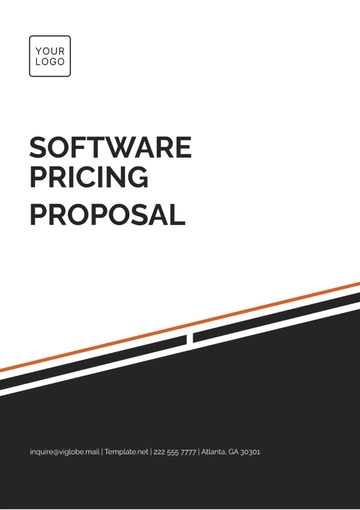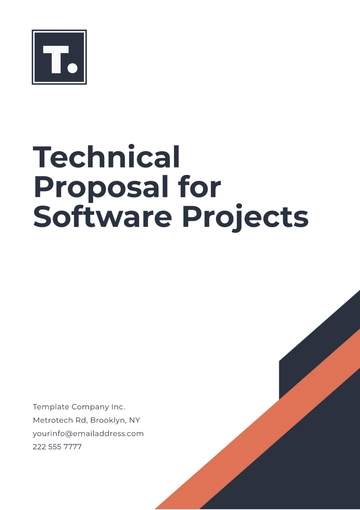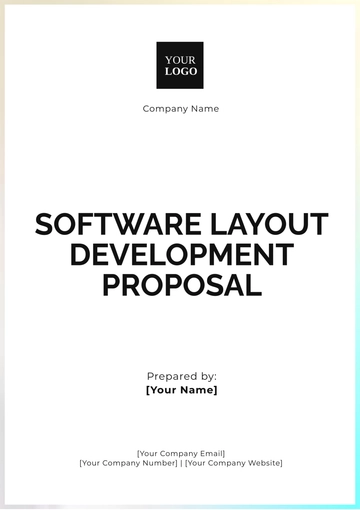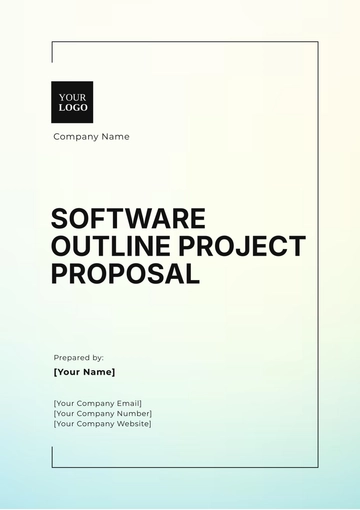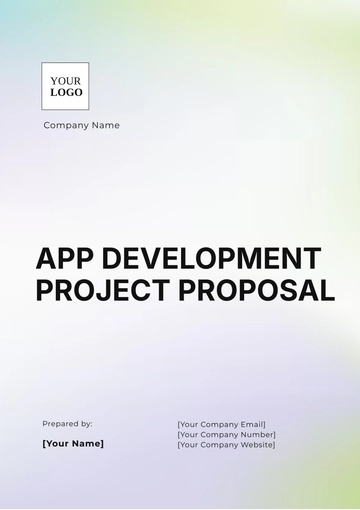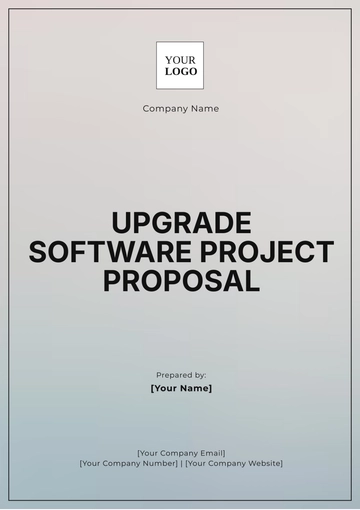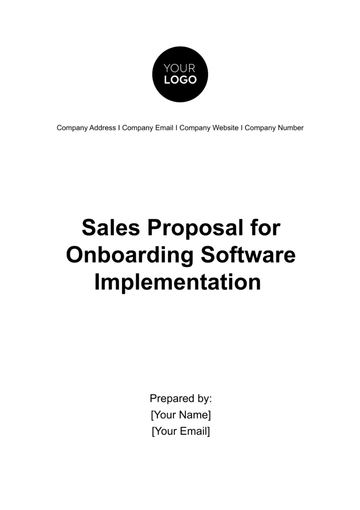Free Sales Proposal for Onboarding Software Implementation

I. Executive Summary
In the ever-evolving world of sales in [Year] and beyond, efficient onboarding of new sales team members is a critical factor in achieving success. To streamline and enhance our onboarding process, we propose the implementation of a cutting-edge Onboarding Software Solution at [Your Company Name].
This proposal outlines the objectives, scope, software selection, implementation plan, budget, expected benefits, and the timeline for this crucial initiative.
II. Introduction
Effective onboarding plays a pivotal role in the success of our sales team. It directly impacts their ability to swiftly adapt to our unique sales processes, acquire product knowledge, and develop essential skills. As Sales Operations Manager, I propose the adoption of advanced Onboarding Software to improve our onboarding process.
Onboarding new team members is not only about introducing them to the company but ensuring they acquire the necessary knowledge and skills to excel in their roles. The sales landscape is rapidly evolving, and our onboarding process should reflect these changes.
III. Objectives
The objectives of this proposal are as follows:
To streamline and standardize the onboarding process for all new sales team members.
To accelerate the time-to-competence of new hires by providing them with the tools and resources they need.
To enhance the overall onboarding experience and increase retention rates.
To create a data-driven approach to evaluate and continuously improve our onboarding process.
Efficient onboarding is a strategic investment that not only shortens the learning curve for new hires but also ensures they become productive contributors to our organization faster.
IV. Scope
The proposed Onboarding Software will cover the following key areas:
Centralized Onboarding Platform:
A cloud-based platform for accessing training materials, documents, and resources. This platform will serve as a one-stop hub for all onboarding needs, making it easy for new hires to navigate and access essential information.
Interactive Learning Modules:
Self-paced e-learning modules covering sales fundamentals, product knowledge, and sales techniques. These modules will be designed to engage and educate new hires in an interactive and immersive manner.
Progress Tracking:
Tools for monitoring and assessing new hires' progress. This feature will allow us to measure each new team member's advancement and identify areas that need additional attention.
Compliance and Certification Management:
Ensuring that new hires meet all compliance requirements and earn necessary certifications. Compliance is critical in our industry, and this feature will help us ensure that every new team member is compliant.
Feedback Mechanism:
A system for gathering feedback from new hires to continuously enhance the onboarding process. Feedback is invaluable for improvement, and this mechanism will encourage new hires to share their thoughts and experiences. This comprehensive scope aims to create an integrated and supportive environment for new hires as they embark on their journey with our company.
V. Proposed Onboarding Software
We recommend the implementation of [Software Name], a robust and customizable onboarding software designed to meet the unique needs of our sales team. The software offers a user-friendly interface, scalability, and integration capabilities with our existing systems. This Software has been selected after a thorough evaluation of various options in the market. Its features align well with our objectives and offer the flexibility needed to customize the onboarding process to our unique requirements.
VI. Implementation Plan
Our implementation plan includes the following phases:
PHASES | DETAILS |
|---|---|
Needs Assessment: | Identifying specific onboarding requirements and customization needs. During this phase, we will engage with key stakeholders and subject matter experts to define the exact requirements of our onboarding process. |
Software Selection: | Procuring [Software Name]. We have already completed the vendor selection process and are in the final stages of negotiations. |
Customization: | Tailoring the software to our sales team's requirements. Customization is crucial to ensure that the software aligns seamlessly with our existing processes and branding. |
Data Migration: | Transferring existing onboarding data to the new system. This step will ensure a smooth transition to the new software. |
Testing and Quality Assurance: | Ensuring the software functions as intended. Rigorous testing is essential to iron out any bugs or issues before the software goes live. |
Training: | Providing comprehensive training to our team on using the new software. A well-trained team is essential to maximize the benefits of the software. |
Go-Live: | Rolling out the software and monitoring its performance. This phase involves carefully transitioning our onboarding process to the new software. |
Post-Implementation Support: | Ongoing support, updates, and maintenance. Our partnership with the software provider will ensure we have the necessary support to address any issues and implement future updates. |
This structured implementation plan is designed to ensure a seamless and successful transition to the new onboarding software.
VII. Budget
The estimated budget for the implementation of the Onboarding Software is as follows:
BUDGET ITEM | ESTIMATE COST |
|---|---|
Software Licensing | $[Amount] |
Customization and Integration | $[Amount] |
Training | $[Amount] |
Support and Maintenance | $[Amount] |
Contingency | $[Amount] |
Total Estimated Budget | $[Amount] |
Software Licensing:
This includes the cost of procuring the [Software Name] for the onboarding process. The amount mentioned is based on the negotiated price with the software provider.
Customization and Integration:
This covers the expenses associated with customizing and integrating the software with our existing systems to align with our specific onboarding needs.
Training:
The amount of budget that has been set aside specifically for training purposes fully encompasses the costs that will be incurred in offering in-depth training to our team. This training will focus primarily on maximizing the efficient use of the newly introduced software.
Support and Maintenance:
This budget covers ongoing support and maintenance costs for the software. The amount specified represents the annual cost for maintaining and updating the software.
Contingency:
This is a budget that has been specifically reserved to cover any unforeseen expenses that might occur or any additional requirements that might emerge during the process of implementation.
Total Estimated Budget:
The total cost estimate for the Onboarding Software Implementation, considering all the above-mentioned budget items.
VIII. Benefits and ROI
The adoption of [Software Name] for onboarding is expected to yield the following benefits:
Improved Efficiency:
Streamlined processes result in quicker time-to-competence for new hires. With the software's interactive learning modules and centralized resources, new team members will be better equipped to navigate their roles.
Enhanced Engagement:
Interactive learning modules and a user-friendly platform lead to more engaged and motivated team members. Engaged employees tend to be more productive and are likely to remain with the company longer.
Increased Retention:
A more effective onboarding experience contributes to higher retention rates. When new team members feel supported and adequately prepared for their roles, they are more likely to stay and grow with the organization.
Data-Driven Improvement:
Data analytics and feedback mechanisms will enable us to continuously enhance our onboarding process. This iterative approach will result in ongoing improvements and a stronger onboarding experience.
Cost Savings:
Reducing manual onboarding efforts and increasing productivity leads to cost savings. The software will streamline many aspects of the onboarding process, reducing the need for manual administrative tasks and, ultimately, saving both time and resources.
The return on investment (ROI) for this project will be evaluated based on increased productivity, reduced turnover, and the ability to quickly adapt to market changes in the highly competitive sales landscape.
IX. Risks and Mitigation
Potential risks include system integration challenges, resistance to change, and unforeseen technical issues. To mitigate these risks, we will maintain close communication with the software provider, conduct thorough testing, and provide ample training and support to our team members.
System Integration Challenges:
To mitigate integration challenges, we will work closely with the software provider to ensure seamless integration with our existing systems. Rigorous testing will also be conducted to identify and address any integration issues proactively.
Resistance to Change:
Resistance to change is a common challenge when implementing new software. To mitigate this risk, we will proactively communicate the benefits of the new software, provide extensive training, and create a culture of openness to new tools and processes.
Unforeseen Technical Issues:
Technical issues may arise during the implementation. To mitigate this risk, we will ensure that our team is well-prepared to address any technical issues and that the software provider offers prompt support and solutions.
Identifying and addressing these potential risks is essential to ensuring the success of this project.
X. Timeline
The proposed timeline for the Onboarding Software Implementation is as follows:
PHASE | DATE |
|---|---|
Needs Assessment | [Month, Day, Year] |
Software Selection | |
Customization | |
Data Migration | |
Testing and Quality Assurance | |
Training | |
Go-Live | |
Post-Implementation Support |
Needs Assessment: This phase involves identifying specific onboarding requirements and customization needs. We will collaborate with key stakeholders and subject matter experts to define the exact requirements of our onboarding process.
Software Selection: During this phase, we will finalize the vendor selection process and procure Software.
Customization: This phase will focus on tailoring the software to our sales team's requirements, ensuring it aligns seamlessly with our existing processes and branding.
Data Migration: Transferring existing onboarding data to the new system, ensuring a smooth transition to the new software.
Testing and Quality Assurance: Rigorous testing to ensure that the software functions as intended and to identify and address any issues before the software goes live.
Training: Providing comprehensive training to our team on using the new software effectively, enabling them to maximize its benefits.
Go-Live: The software will be rolled out, and its performance will be closely monitored during this phase.
Post-Implementation Support: Ongoing support, updates, and maintenance, ensuring the software operates smoothly and is regularly updated to meet evolving needs.
XI. Approval and Sign-off
We seek approval for the implementation of the Onboarding Software as outlined in this proposal. Your support for this initiative will significantly contribute to our sales team's success in [Year] and beyond.
- 100% Customizable, free editor
- Access 1 Million+ Templates, photo’s & graphics
- Download or share as a template
- Click and replace photos, graphics, text, backgrounds
- Resize, crop, AI write & more
- Access advanced editor
Introducing the Sales Proposal for Onboarding Software Implementation Template from Template.net. This meticulously designed proposal streamlines the process of implementing cutting-edge onboarding software. Crafted with precision, it outlines the benefits, features, and implementation strategies, ensuring a seamless transition and maximizing efficiency for your sales team. The template is now customizable and editable using our Ai Editor Tool.
You may also like
- Business Proposal
- Research Proposal
- Proposal Request
- Project Proposal
- Grant Proposal
- Photography Proposal
- Job Proposal
- Budget Proposal
- Marketing Proposal
- Branding Proposal
- Advertising Proposal
- Sales Proposal
- Startup Proposal
- Event Proposal
- Creative Proposal
- Restaurant Proposal
- Blank Proposal
- One Page Proposal
- Proposal Report
- IT Proposal
- Non Profit Proposal
- Training Proposal
- Construction Proposal
- School Proposal
- Cleaning Proposal
- Contract Proposal
- HR Proposal
- Travel Agency Proposal
- Small Business Proposal
- Investment Proposal
- Bid Proposal
- Retail Business Proposal
- Sponsorship Proposal
- Academic Proposal
- Partnership Proposal
- Work Proposal
- Agency Proposal
- University Proposal
- Accounting Proposal
- Real Estate Proposal
- Hotel Proposal
- Product Proposal
- Advertising Agency Proposal
- Development Proposal
- Loan Proposal
- Website Proposal
- Nursing Home Proposal
- Financial Proposal
- Salon Proposal
- Freelancer Proposal
- Funding Proposal
- Work from Home Proposal
- Company Proposal
- Consulting Proposal
- Educational Proposal
- Construction Bid Proposal
- Interior Design Proposal
- New Product Proposal
- Sports Proposal
- Corporate Proposal
- Food Proposal
- Property Proposal
- Maintenance Proposal
- Purchase Proposal
- Rental Proposal
- Recruitment Proposal
- Social Media Proposal
- Travel Proposal
- Trip Proposal
- Software Proposal
- Conference Proposal
- Graphic Design Proposal
- Law Firm Proposal
- Medical Proposal
- Music Proposal
- Pricing Proposal
- SEO Proposal
- Strategy Proposal
- Technical Proposal
- Coaching Proposal
- Ecommerce Proposal
- Fundraising Proposal
- Landscaping Proposal
- Charity Proposal
- Contractor Proposal
- Exhibition Proposal
- Art Proposal
- Mobile Proposal
- Equipment Proposal
- Student Proposal
- Engineering Proposal
- Business Proposal
